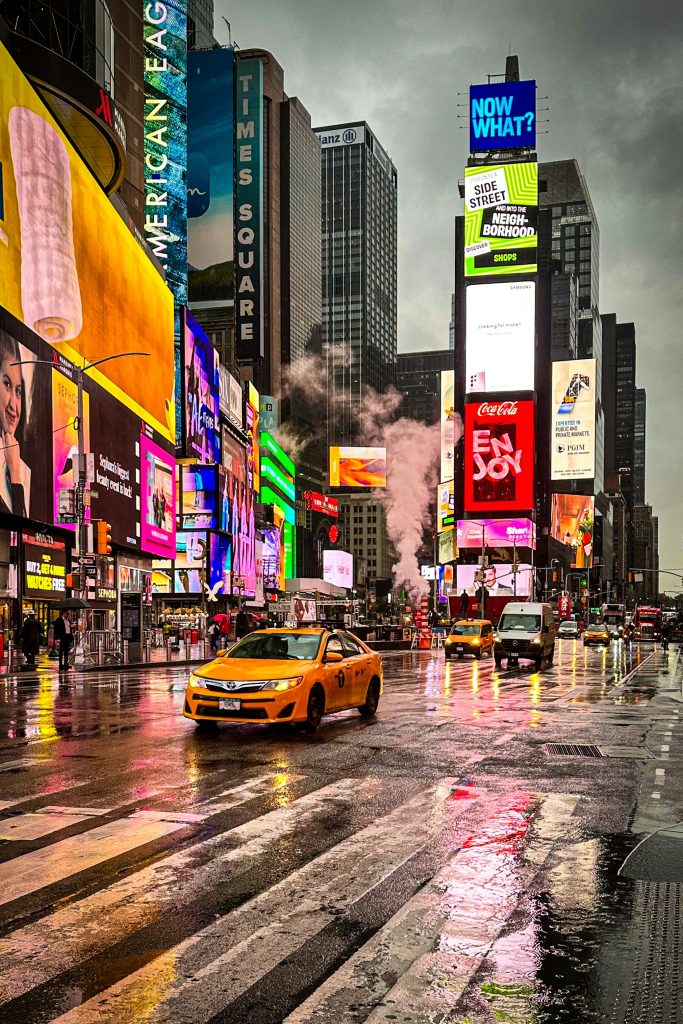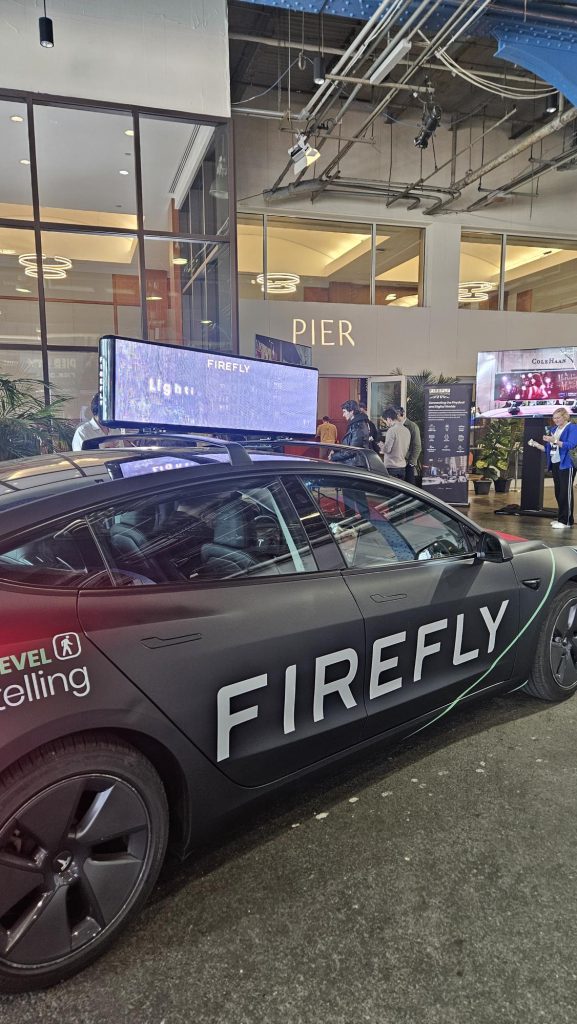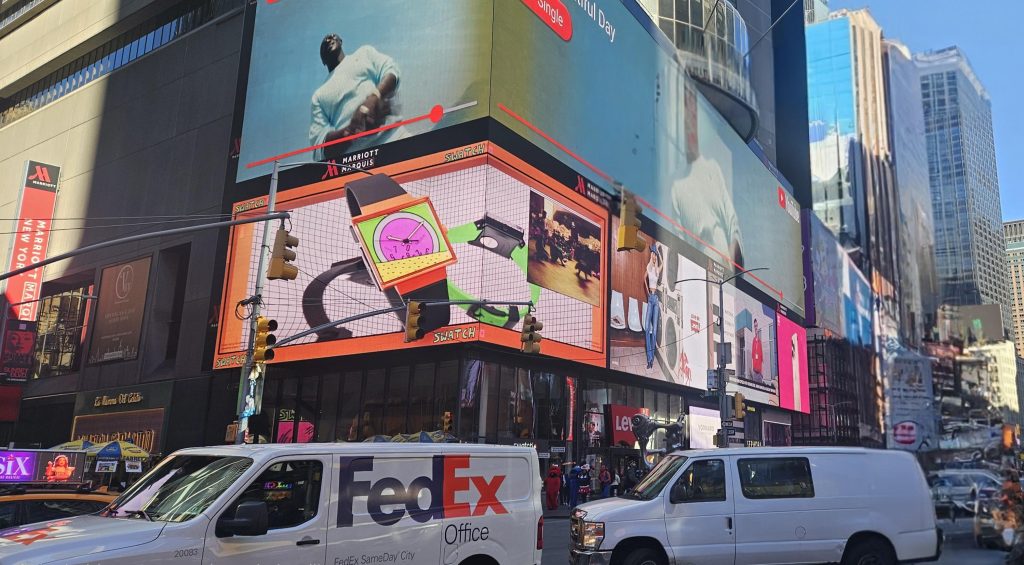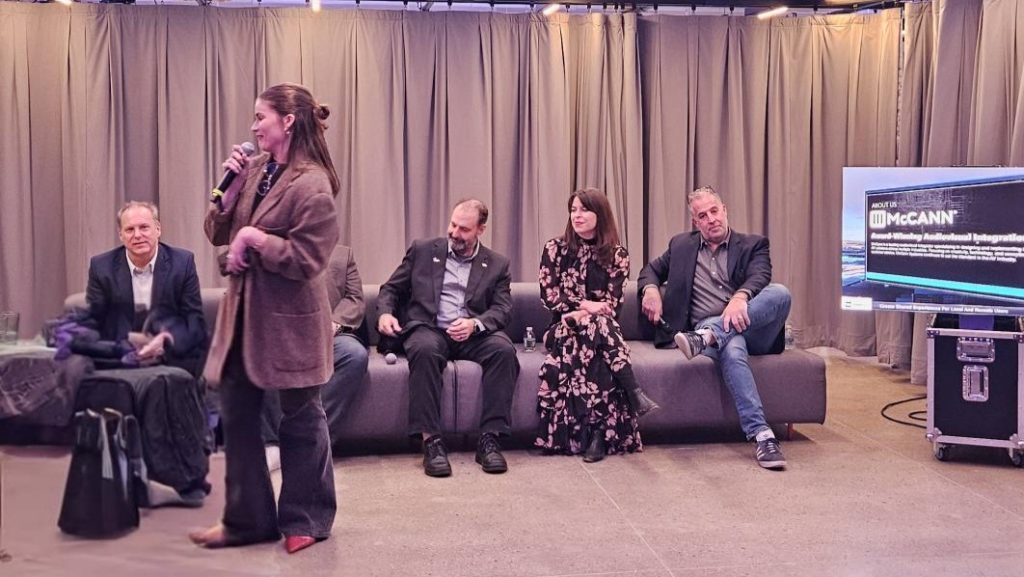
As the digital advertising world grapples with the death of cookies and the steady decline of linear TV, marketers are increasingly looking for alternatives that deliver both reach and measurable impact. One such alternative is Digital Out of Home (DOOH). While cookies once enabled hyper-targeted online campaigns, their impending disappearance, alongside the shrinking audience for traditional TV, has opened the door for DOOH to take center stage.
Jørn Olsen attended this year’s Out of Home NYC Week recently, where it became clear that both DOOH and retail media are uniquely positioned to fill these gaps—but in different ways. While retail media focuses on the point of sale and driving conversions near physical or digital stores, DOOH serves a broader purpose: creating mass awareness and driving engagement in public spaces.
Here are Jørn’s key takeaways from the event, and what’s driving the rapid evolution of the DOOH industry:
1. Programmatic DOOH: A Precision Tool for Reaching Light Users
One of the standout moments of the week was during the DPAA Global Summit, where programmatic DOOH emerged as a game changer. Programmatic enables advertisers to buy ad space in real-time, using data to target specific audiences, locations, and times of day with unprecedented precision.

Shenan Reed of GM highlighted a critical point in her presentation: it’s easy for brands to over-index on heavy users and miss out on the light users who are crucial for long-term growth. This aligns with the principles of Byron Sharp, who emphasizes the importance of reaching light buyers to drive market share. Thanks to programmatic DOOH, it’s now easier to manoeuvre these audience segments, ensuring that brands don’t just engage their core users but also expand their reach to those less frequent but vital light buyers.
2. Retail Media and DOOH: Two Complementary Forces
While retail media and DOOH are both integral to the future of advertising, they serve different purposes. Retail media connects brands with consumers at critical decision points, such as in-store or near a retailer’s location, making it perfect for driving conversion. DOOH, on the other hand, focuses on mass-reach advertising, enabling brands to engage with large audiences in public spaces—be it through billboards, transit shelters, or digital displays.
David Mataranglo of KINESSO emphasized how retail media is growing as brands leverage data to target shoppers at pivotal moments. Meanwhile, DOOH continues to evolve, especially with programmatic buying allowing advertisers to tailor campaigns in real time. These two approaches complement each other, providing brands with both mass awareness and the ability to close the loop on customer journeys.
3. Creative Innovation and Immersive Experiences
One of the most exciting parts of the week was seeing the innovation in creative formats. DOOH is not just about placing ads on screens anymore—it’s about creating memorable, immersive experiences. At Sony’s AV Expo, I was particularly impressed by their glasses-free 3D display, a futuristic technology that hints at the potential for more dynamic, engaging campaigns in public spaces. DCO (Dynamic Creative Optimization) is also set for a massive growth with 94% of US marketers considering piloting or actively integrating DCO into their campaigns. DCO refers to a form of programmatic advertising that enables customized ad creation based on real-time data. We will definitively see experience as a growth driver for OOH and retail media. Below you can see Swatch’s take on a forced perspective campaign.

As technology becomes more accessible, brands are finding new ways to capture attention with augmented reality, interactive elements, and eye-catching displays. With programmatic capabilities, these creative formats can now be targeted to the right audiences at the right times, enhancing their relevance and impact.
4. Sustainability: A Growing Priority
Sustainability was a key theme throughout the event. With increasing pressure on brands to reduce their carbon footprints, the OOH industry is focusing on more energy-efficient technologies. A standout demonstration came from KA Dynamic Color, which showcased a display that only uses power when changing content. It’s still in the early stages, but innovations like these will play a significant role in making DOOH a more sustainable medium.
OOH is already one of the most environmentally friendly advertising channels, particularly when it supports public infrastructure such as bus shelters or transit systems. Brands that want to demonstrate their commitment to sustainability can benefit from aligning their campaigns with such initiatives.
5. Measurement and Insights: Still Some Way to Go
A recurring topic during the week was the evolution of measurement and analytics in DOOH. The summit featured numerous companies showcasing cutting-edge measurement tools—each bringing valuable insights into audience engagement and campaign performance. However, despite the advancements, there is still no unified global standard for DOOH measurement, which remains a challenge for advertisers looking to compare their OOH campaigns with other digital media.
As the industry moves toward greater standardization, measurement will become even more transparent, enabling advertisers to make more informed decisions about where and how they allocate their budgets. This will be crucial for the continued growth of the medium.
6. The Role of AI in Enhancing Experiential Marketing
AI is playing a transformative role in the OOH space, particularly in experiential marketing. At the event hosted by TAD, speakers from Intersection and Zenapptic.ai explored how AI can be used to create real-time, context-driven experiences that adapt to their environment.

Intersection’s LinkNYC totems offer a glimpse into the future of OOH, with built-in beacons that could serve hyper-personalized content. However, privacy concerns have shifted the focus towards contextual experiences that don’t rely on personal data. This one-to-many model, which tailors content based on location or time of day, enhances the audience experience while respecting privacy.
The Road Ahead for DOOH
The future of DOOH is incredibly bright. As the cookie crumbles in the online world and linear TV continues its decline, DOOH is positioned as a flexible, creative, and measurable alternative for advertisers. Geopath data shows that OOH could deliver over 5 trillion impressions annually in the U.S., with the market potentially growing to $16 billion in the coming years.
With programmatic buying, improved measurement, creative innovation, and sustainability at the forefront, the opportunities in DOOH are endless. As we continue to ramp up our offerings within DOOH and retail media, we’re excited to be part of this dynamic industry that is poised for rapid growth and transformation.
